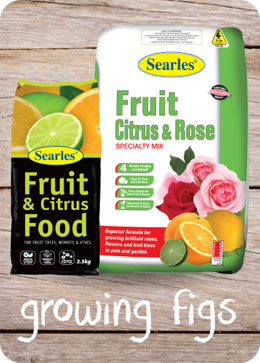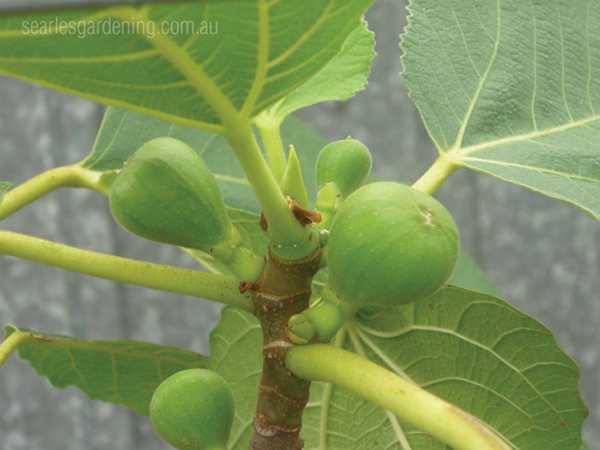How to grow and plant fig trees
 |
|
Picking a fresh fig from a tree in a home garden is one of the greatest pleasures a gardener can experience. Generously, fig trees produce two crops of fruit a year and are considered a low maintenance fruit tree to plant in home gardens. There are so many positives for growing figs at home and we haven’t even mentioned anything about how good they taste.
Figs are used in so many culinary dishes from salads, cheese and fruit platters to desserts or just enjoyed sliced, drizzled with honey on a piece of toast for breakfast. Traditionally figs originate from a Mediterranean climate where it is hot and dry in summer, mild in winter and escapes the heavy rainfall in spring and summer. However, they are considered a low maintenance plant and will grow in most Australian climates. Their ornamental shape fits right into formal or informal gardens or in pots in small courtyards. They make ideal pot specimens for patio areas, especially if you want them at arms reach.
Planting fig trees Choose an infertile fig variety from your local gardening outlet. This will eliminate the need for cross pollination from the tiny fig wasp. Even though they are considered a low maintenance plant, figs do need a well drained soil mixed with plenty of well composted manure and placed in a protected position away from strong winds. If space, soil quality and position are an issue, figs grow well in large pots. For planting figs in pots, plant straight into a pot over 40cm in diameter with Fruit, Citrus & Rose Specialty mix. When planting in gardens dig 5 IN 1 Fertiliser into the soil before planting. 5 IN 1 Fertiliser is full of well-composted manures and other high grade organic ingredients, all blended through a new, enhanced processing technique. This produces a fine and more friable textured product which helps release nutrients to the plants more effectively, providing better plant growth & health. Fig trees have shallow roots so once planted, water well and mulch underneath the plant and beyond the dripline to protect their roots.
When do figs fruit? Fig trees are generous fruiters and will give you a crop twice a year. In Autumn the first crop of the year, known as the ‘breba’, crop grows on last year's branches and yields larger fruit but in less numbers than the second crop ‘higos’, which is considered the main crop of the year. The ‘higos’ crop grow on new branch growth.
Fertilising fig trees Avoid using a high nitrogen, fast release fertilizer. This will promote strong leaf growth at the expense of fruit production. Opt for a bloom boosting fertiliser with long nutrient release such as Searles Fruit & Citrus Plant Food.
Harvesting figs Depending on the variety grown, figs are best ripened on the tree, then harvested and consumed within a day or two after picking. Drying and preserving figs are ideal to keep the rest of the harvest that not consumed within the first few days of picking. Pick figs when they begin to soften and the ends, or the ‘eye’, are just starting to open. It is best to twist and not pull the fruit off the tree. This will protect their delicate flesh from tearing or bruising. Wear gloves while harvesting as the stems ooze a milky white sap, which may irritate some sensitive skin.
Pest & disease affecting figs In long periods of rain and humidity, fig trees can be susceptible to fungal disease such as rust, leaf spots and anthracnose. Hang fruit fly traps in and around the tree area to curtail fruit fly activity. Bagging fruit can also help. Leaf eating bugs can be sprayed on contact with Searles Bug Beater. Not surprisingly for fig growers, the main problem effecting loss of fruit is the neighbouring birds, possums and bats population. While the fruit is developing or close to ripening, throw a bird-friendly netting over the tree.
Pruning fig trees To encourage more productivity, prune by about one third each winter. Keep in mind fig trees require several main branches as structural supports for new growth. Also prune dead, diseased or overlapping branches to keep fungal diseases at bay and to leave room for new growth. Newly pruned branches make excellent cuttings to propagate.
|
 --------------------------------- FOR MORE INFO CLICK PRODUCT NAME BELOW Fruit & Citrus Plant Food Fruit, Citrus & Rose Specialty Mix |





